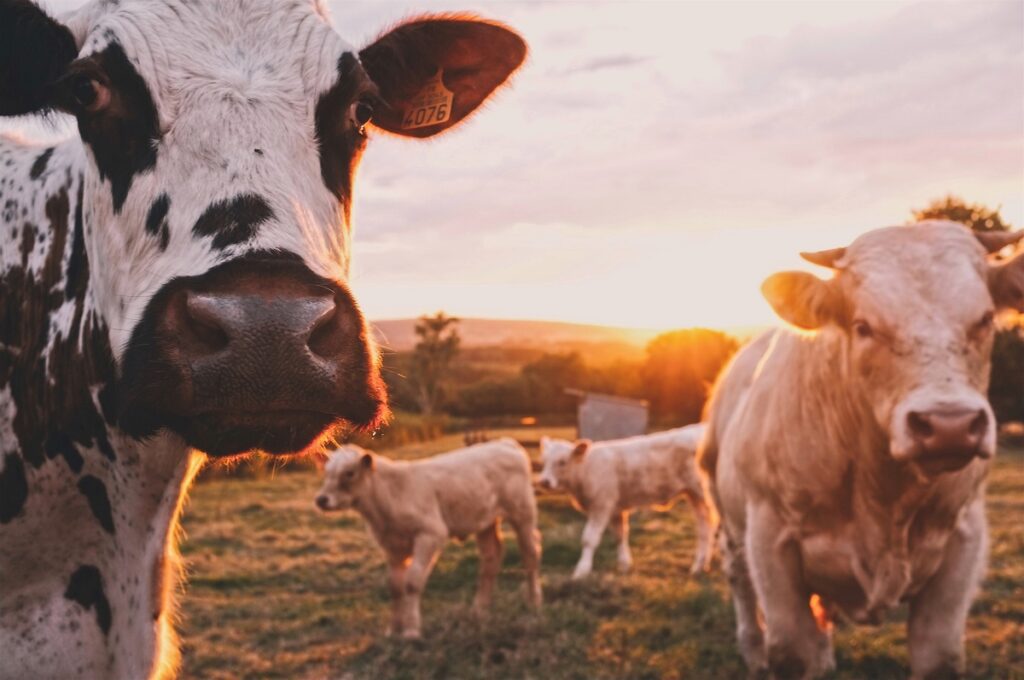Farmers, biotech firms, the federal government, and other stakeholders are cooperating closely to tackle the emerging challenge of protecting cattle against avian flu, said panelists in a July 12 webinar.
Along with public-private partnerships, knowledge of the virus in birds facilitates efforts to mitigate the threat to dairy cows, said members of government and industry who joined the webinar organized by AgriPulse.
“Boehringer’s been involved in the influenza business globally for many years, primarily on the poultry side. This was a unique situation,” said Dr. Doug Ensley, DVM, Director of Veterinary Public Health at Boehringer Ingelheim, a member of the Biotechnology Innovation Organization (BIO). “Now we’re seeing what we can do to utilize our knowledge base to develop something highly efficacious and safe for our cattle industry.”
The infection of dairy cattle with H5N1 avian flu took farmers by surprise, according to Jamie Jonker, Ph.D., Chief Science Officer, National Milk Producers Federation.
“On a scale of 1 to 100, I would say we were at a 100 total surprise of finding this in dairy cows. It wasn’t on our radar until March 25. We started having herds with mystery illnesses in the Texas panhandle and New Mexico in February to March of this year. We were ruling everything else out,” Jonker said. “It wasn’t a common disease, wasn’t a less common disease, it wasn’t an uncommon disease. It was none of the things we would expect. Thanks to the great work of our laboratories, we were able to find out that it was H5N1.”
What’s being done to address the outbreak in dairy cows?
The current avian flu pandemic began among birds in February 2022 and the spread among poultry has been much wider than in cattle, said Dr. Jonathan Zack, DVM, Director, Preparedness and Incident Coordination at the U.S. Department of Agriculture’s Animal and Plant Health Inspection Service (APHIS). The virus was detected in 1,164 flocks in 48 states and impacted over 99 million individual domestic poultry, he said.
APHIS has already committed $91 million for indemnity for depopulated birds and eggs and $239 million for disposal and environmental elimination activities, Dr. Zack said. Costs associated with addressing avian flu in livestock are estimated at a further $163 million, which means that, of the $1.3. billion in funding APHIS has committed to addressing avian flu, $816 million is still available, he added.
The USDA Centers for Veterinary Biologics (CVB) put out a request for information (RFI) in May, asking vaccine companies for information about existing or potential vaccines to protect cattle from avian flu, said Dr. Zack. As of June, some 24 companies were working to develop vaccines, according to a report.
Boehringer Ingelheim was one of the original companies that responded to the RFI. They are now seeking to prepare a vaccine. “We’re working closely with the USDA and CVB to look for opportunities to test and develop that innovation,” Dr. Ensley said.
The importance of strong infrastructure
While the challenge of addressing avian flu in cattle was unique, the public-private infrastructure for cooperation is not.
Initial plans for dealing with avian flu were developed around 2008 through cooperation between the USDA, “academic centers, state animal health officials, producers, poultry scientists—a big tent,” according to Dr. Zack. “At the time a lot of people felt this was a lot of work, but lo and behold when [the avian flu outbreak of] 2015 came, we were prepared and these were the fastest implemented plans in the history of state and federal animal health response.”
A relatively new mechanism for cooperation, the National Animal Vaccine and Veterinary Countermeasures Bank, was established by the 2018 Farm Bill to stockpile countermeasures “to protect U.S. livestock from foreign animal diseases,” Dr. Zack said.
Boehringer Ingelheim is one of the vaccine companies participating in supplying the bank with countermeasure tools. As Boehringer’s Dr. Ensley explained, the bank does not contain vaccines because they have a shelf-life. Instead, the bank will hold stockpiles of the antibody-generating antigens that make vaccines work, because antigens can be frozen and kept long-term.
Boehringer Ingelheim’s international operations allow them to obtain antigens for diseases that are not yet present in the U.S., such as foot and mouth disease (FMD). “We’ve all seen in the past how important speed is to response to disease so that’s really what the bank does is it allows USDA to respond in the event of an FMD outbreak,” Dr. Ensley said.
The cooperation that enabled the 2015 avian flu response and the preparation for FMD is also behind efforts to prevent a greater threat to dairy cattle, panelists agreed.
“I think USDA does an outstanding job of monitoring, and the companies and the producer groups really bring a lot more to the table,” said Dr. Ensley. “That partnership is invaluable to our industry.”




